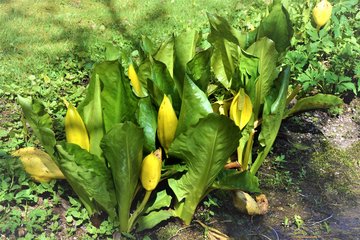Caution: invasive plants!
Back
to
top
Special attention is paid to the cultivation of plants that can potentially be invasive. Indeed, some species, that are non-invasive in their country of origin, can become invasive exotic species when they are imported into other regions. A well-known example is that of the Himalayan balsam (Impatiens glandulifera), introduced during the 19th century as an ornamental and melliferous plant, that spread on the whole continent and became invasive on riverbanks. It is also often found in the lowlands of the Vosges.

The Lysichiton, an American plant species from the Araceae family, cultivated in the Chitelet garden, is closely watched over/ monitored every year so that it does not spread outside the garden. This perennial herbaceous plant with yellow flowers, also known as Arum Italicum, thrives in wetlands and is used for educational purposes. In some regions its spreading causes other species to disappear/ to become extinct/ is responsible for the extinction of other species.
For more information, please visit the EEE Grand Est website.


